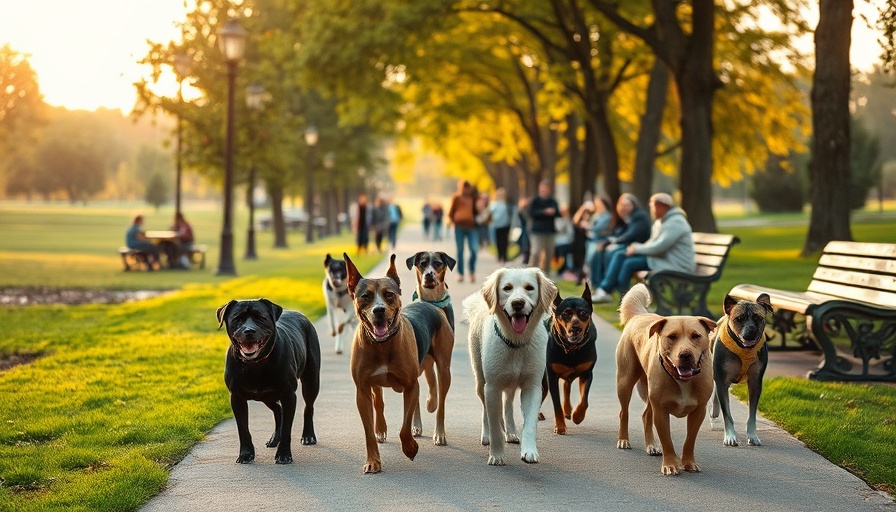
Understanding Car Anxiety in Dogs: A Serious Concern
Car anxiety in dogs is more than just a behavioral issue; it’s a significant concern that can endanger both the pet and the passengers in the vehicle. Dogs suffering from anxiety during car rides often display distress by pacing, crying, or attempting to escape, which compromises safety for everyone involved. Fortunately, with patience and the right techniques, owners can help their furry companions learn to enjoy or, at the very least, tolerate their time in the car.
Why Your Dog May Fear Car Rides
The reasons dogs experience anxiety in cars can vary significantly. Understanding these can guide you in addressing the issue:
- Motion Sickness: Particularly in younger dogs, car rides may trigger nausea. Symptoms such as excessive drooling or vomiting indicate your pet might be suffering from motion sickness, which can compound their anxiety.
- Negative Associations: Dogs that associate the car with unpleasant destinations—like the vet or groomer—are likely to feel anxious each time they enter a vehicle. Owners should be mindful of the experiences their dogs have while traveling.
- Sensory Overload: For dogs, the unfamiliar sounds, sights, and smells in a moving vehicle can feel overwhelming. This sensory overload can lead to significant fear and anxiety.
- Lack of Socialization: Dogs that were not adequately exposed to vehicle travel during their formative months are often more prone to anxiety while riding in cars. Building confidence earlier in a dog’s life can help mitigate car anxiety later on.
How to Help Your Dog Overcome Car Anxiety
Helping your dog manage car anxiety requires strategic planning and early interventions. Here are practical steps to create a positive experience:
Step 1: Create Positive Associations
Associating the car with fun and rewarding experiences is essential. To do this:
- Allow your dog to explore the car before any rides. Offer treats and encouragement to make this a fun experience.
- Spend time sitting in the parked car. Use toys or treats as you pass the time together.
- Incorporate enjoyable activities with car outings, such as bringing along a favorite chewy toy or feeding them a special treat while in the car.
Step 2: Ensuring Comfort & Safety in the Vehicle
Feeling secure in the car can significantly reduce anxiety. Consider these options:
- Utilize a crash-tested harness and tether for stability during travel, ensuring your dog feels secure while restrained.
- A secured crate fitted with a soft mat can create a comforting environment.
- Designate a specific spot in the car for your furry friend and practice "Place" or "Down-Stay" routines.
- Incorporating calming items like PEMF mats can soothe nervous pets and promote relaxation.
Step 3: Gradual Training for Confidence
Building your dog’s confidence takes time, and it's key to start gradually:
- Start by spending time in the parked car with your pet.
- Turn on the engine while remaining stationary to accustom them to the sound.
- Gradually back out of the driveway, and when your dog seems relaxed, take short trips around the neighborhood.
Common Misconceptions About Car Anxiety in Dogs
Cultural misconceptions often cloud our understanding of animal behavior. One such belief is that providing discipline alone can fix anxiety issues. However, anxiety is deeply psychological and requires a compassionate, gentle approach. It’s crucial to understand that a dog’s anxiety can’t be simply trained away but rather managed with care and thoughtful strategies.
The Role of Environmental Adjustments
Environmental factors play a critical role in alleviating anxiety. Consider adjusting the interior of your car to make it more welcoming. For instance, adding cozy mats, using sunshades to limit bright sunlight, and minimizing loud noises can help create a more tranquil atmosphere for your pet.
Future Opportunities and Insights
As awareness of dog car anxiety increases, the pet industry is seeing a rise in products designed to help. From calming pheromone sprays to comfortable, specialized pet car seats, owners can find numerous tools aimed at enhancing their dog’s travel experience. Ongoing research also looks into the psychological aspects of animal behavior, providing new insights that could lead to better solutions in the future.
Conclusion: Comfort for You and Your Dog
Understanding your dog's anxiety and applying these techniques can transform car rides from stressful to enjoyable experiences. As you implement these methods, your bond will strengthen, and travel can become a cherished adventure instead of a challenge. Caring for your dog's emotional well-being is essential—not just for safer travels but for a happier, healthier life.
 Add Row
Add Row  Add
Add 


Write A Comment